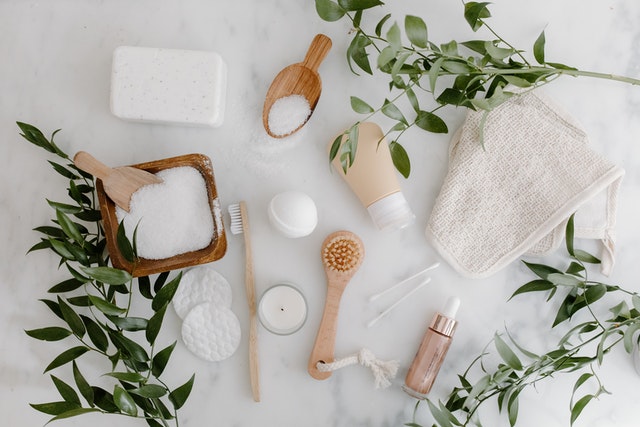Obviously we all want to achieve great results with our succulents. We want to see them shine, flower, and thrive in our houses and gardens. In order to achieve such results with any plants, people look for shortcuts, experimenting with both natural and chemical substances. One of the most discussed lately is Epsom Salt, one of many naturally occurring mineral salts, a compound of magnesium and sulfate. The theory behind this is that succulents live in rocky and sandy areas, many of which are rich in these minerals, and hence fertilizing them with Epsom Salt can help them grow to size and beauty as they’d achieve in their natural habitat. But is this true, or just a myth?
I experimented with Epsom Salt on succulents, and I’ve also talked to other growers who did that. What’s more, I’ve dived into some research in the library, trying to find evidence that would support my hypotheses. One can say that I devoted a considerable time to this topic, trying to find the truth. On the following lines I will explain what I found, and I hope it will help you decide whether or not to use Epsom Salt as a fertilizer for your succulents. Let’s go!
Native habitats of many succulent species are rich in minerals contained in Epsom Salt, but that doesn’t necessarily means succulents utilize them
The fact that Bedouins live in Sahara desert doesn’t mean that they live from sand, or eat it… And the same is true about succulents. Many species thrive in rocky areas, but this has little to do with high content of magnesium in such environment. They live in rocky areas because they like the aeration, and the sun and heat on rocks. They aren’t there for Magnesium or any other mineral, and won’t necessarily utilize it just because it is present there.
Of course, exception proves the rule here. We should not forget that there are more than 10,000 known succulent species in the world, and probably thousands of unknown species. Some of them, especially those with special shapes or shiny colors of flowers may, in some seasons, utilize Magnesium or even Sulfate they find in the soil. Most succulents just won’t do that though. They live in a soil rich in certain nutrients for a completely different reasons…

Succulents planted in right soil mix watered with rainwater and getting enough sunlight do not need any fertilizers to flower and thrive
We should not forget that succulents are undemanding plants. Once you do things right at the beginning, meaning planting them in right soil mix (special for succulents), using a pot with a drainage, putting them on a sunny spot, and perhaps watering them with rain water instead of tap water which is full of chemicals in many countries, they will thrive almost in neglect. It is a myth that succulents need fertilizers to flower. Sure, some people need to fertilize them to see them blossom, but that’s because they do not grow them properly at first place (lack of sun, too much water, bad soil mix, etc).
This applies to Epsom Salt as well as any other fertilizer. Succulents do not get such an extra boost of nutrients in their natural habitat, so why would you give it to them at your home? Don’t forget that it can cause stress to the plant, which can result in unnatural changes of color and other undesirable results. Keep it on your mind before you buy a kilo of Epsom Salt. Maybe you will benefit more from putting it to your own bath than “bathing” your succulents with it.
Small-scale experiments are always welcome, especially if you struggle to achieve desired results with your succulents
With everything I said up to this point, we should not forget that plants are just plants (and I am saying this with a lot of respect to this amazing kingdom of living organisms that feed us). When you lose a plant you can always buy a new one. You can even propagate a new plant from an already dying plant, from a leaf or a stem cutting, with a help of some rooting hormones. Considering this, little experiments are perhaps worth the try, should you struggle to achieve good results with your succulents.
If you decide to use Epsom Salts, make sure to start with moderate quantity. You can for example choose three succulents, ideally the same specie, such as three Jade Plants or three Snake Plants. Dissolve Epsom Salt in water (2 tablespoons in one gallon), and spray it on the foliage of the plant, which should result in better absorption than watering your succulents with it, though you can try it as well. Observe the results and compare it with the control group. Make sure that except of the Epsom Salt bath, the plants in a test and control group get the very same care–the amount of sunlight per day, watering schedule, etc. And then wait, and see if the application of Epsom Salts makes any difference for the succulents in question.
Conclusion
Based on my experiments, reading in libraries, and discussions with fellow succulent growers, I do not think it makes much sense using Epsom Salts as a fertilizer for succulents. It isn’t really necessary, and the theory behind the hypothesis is simply false (while succulents often live in soil/medium rich in minerals contained in Epsom Salts, they do not necessarily utilize any of these minerals).
Growing succulents is simple, but you should not look for shortcuts. Try to give your plants what they need, in terms of right soil mix, enough sun, and occasional soaking in water. If you do that and do not grow some rare and demanding succulent, you will get the desired results, without using Epsom Salts or any other fertilizers. I hope it helps and wish you good luck with your succulents!
May also interest you: Are banana peels good for succulents?
